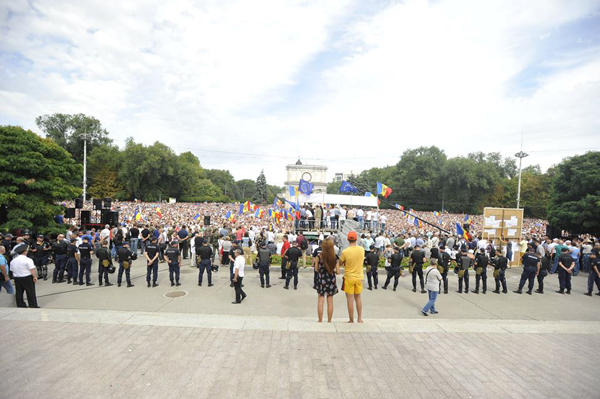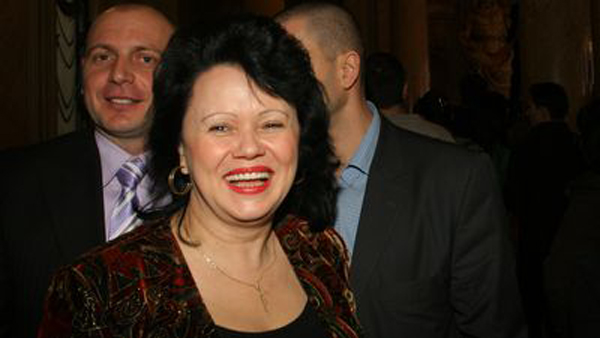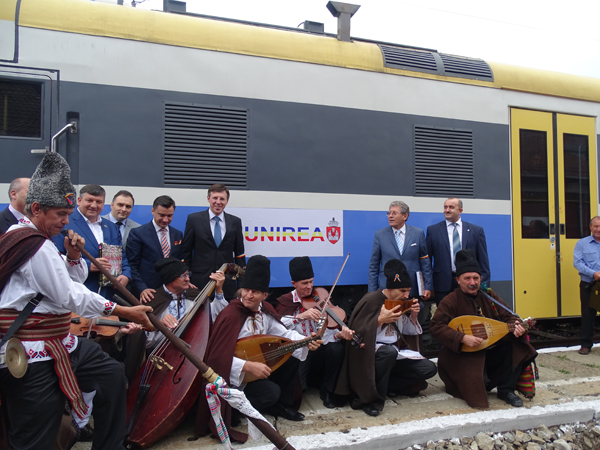The protests which started in September 2015 in Moldova gather all the necessary premises to expand in October as well and represent a very complex phenomenon that can change the development course of the state east of the Prut River. However, the direction this vector of change is focused on still hovers under discussion: westwards, through the removal of a corrupt regime and replacing it with one that would serve better the national interest or eastwards, to the Eurasian Union, thereby establishing an anarchic system that would be beneficial to the strengthening of the pro-Russian political parties, led by personalities such as Igor Dodon or Renato Usatâi.

Using the theory of social movements and following the model of the sociologist François Chazelle, we will try to analyze the meanings of the protests and to develop some possible evolutionary scenarios regarding the political environment in Chisinau. Fr. Chazelle (1997, p. 305) defines the social movement as „a collective action of protest and contestation that seeks to impose changes – varying in importance – in the social and / or in the political structure, appealing frequently – but not exclusively – to means that are not institutionalized”[1]. In such, we notice that the protest movements in Chisinau fall into this pattern: the people are chanting for changing the regime while some political parties campaign for early elections even though there are some members of the current political leadership, as the Prime Minister Valeriu Streleţ, who have been recently designated. Furthermore, left wing political leaders did not obtain any approval from the town hall to organize protests.

For a deeper understanding of the meanings of the current social movements taking place currently in the Moldovan capital city, we need to have an overview of the political system (internal) from Chisinau and of the regional geopolitical framework (Moldova – stake between Russia and the West), context which has led to the developing protests in the Great National Assembly Square.
Through the protests happening in the capital city, in September 2015, Moldova said a determined „No” to the oligarchic system that fraudulently captured the state apparatus. However, the voices advocating for change are divided, being split, on one hand the representatives of the DA Platform – Truth and Justice (Platforma DA – Dreptate și Adevăr) which is supposed to be a civic society and on the other, the demonstrators organized by the political left parties. These socialists who identified the protests as an opportunity to overthrow the pro-European regime (regime whose leaders, in any case, did not understand the European democratic values over the years) are now fighting to monopolize power by calling anticipated elections.
In the last year, Moldova has been one of the top countries in what concerns political scandals, as there were events taking place month after month, marked by the changing of high-level leaders or the fraudulent misappropriation of funds in the banking system. First it was the scandal provoked by the disappearance of a billion dollars from three state-owned banks (the Savings Bank/ Banca de Economii, the Social Bank/Banca Socială and Unibank). Afterwards, followed the resignation, in June, of the Prime Minister Cyril Gaburici, as a result of the accusation of false declaration in acts regarding the fraud of the baccalaureate diploma, event after which the risk of a serious political crisis was enormously high and could have caused instability in the entire state.
All these events have one single cause in common: corruption. The national currency depreciation, the lack of employment and the justice reform applied only at a declarative level and not in practice have caused thousands of people to protest days in a row in the Great National Assembly Square from Chisinau. The demonstrators are militating against the current corrupt political system. Further on, faced with the lack of progress regarding the justice system, Romania is actively involved in helping its neighboring state by exposing and exporting the institutional model of DNA (the National Anticorruption Directorate). Thus, a former prosecutor of the National Anticorruption Directorate from Romania, Mariana Alexandru, arrived on September 15th, 2015, in Chisinau, being selected by the Delegation of the European Union to assist in the investigation of economic and financial crimes, as adviser to the National Centre for Anticorruption (CNA) and to the Prosecutor General (PG)[2].

The involvement of Romania and the European Union in supporting Moldova in the fight against corruption is impetuously necessary. The risk that Moldova is exposed to because of corruption is of two kinds: 1. From a socio-economic perspective, the accentuation degree of poverty is increasing, potentially producing a dark scenario – state bankruptcy; and 2. From the political point of view, the possibility that the socialist left parties rise in polls, win popularity among citizens and overthrow the current regime during street protests could grow, which implies, from a geopolitical perspective, that the Russian Federation could obtain total control over the Moldovan state apparatus. For the entire Euro-Atlantic community, a scenario like the last mentioned totally lacks benefits, is dangerous and requires early involvement of the West and of Romania in Moldova in order to keep following its European path integration.
In this brief analysis, we demonstrated how the protests in Chisinau happen according to the theory of social movement developed by Fr. Chazelle and in the end we showed how this socio-political phenomenon involves reactions at the geopolitical level. It is clear that the change in the Moldovan political system must take place, however, very important is how it will take place: by replacing a corrupt political system with another one maybe even worse and beyond all coordinated by Moscow, or by improving the judicial system and strengthening the rule of law with the help of Romania and European Union as a whole? Thus, time will show us the tumultuous path the second Romanian state will go through and how the image of the European Union’s eastern border will look like.
Bibliography
According to Conf. Dr. Hatos, Adrian, article published in the Encyclopedia of Social Development, 2007, Polirom, Iaşi, pp. 373‐379;
Procurorul DNA, Mariana Alexandru a trecut Prutul, article published in Evenimentul Zilei on September 15th, 2015, link: http://www.evz.ro/procurorul-dna-mariana-alexandru-a-trecut-prutul.html accessed on September 29th, 2015.
[1] According to Conf. Dr. Adrian Hatos, article published in the Encyclopedia of Social Development, 2007, Polirom, Iaşi, pp. 373‐379;
[2] Procurorul DNA, Mariana Alexandru a trecut Prutul, article published in Evenimentul Zilei on September 15th, 2015, link: http://www.evz.ro/procurorul-dna-mariana-alexandru-a-trecut-prutul.html accessed on September 29th, 2015.
Author: Radu Pătrașcu

